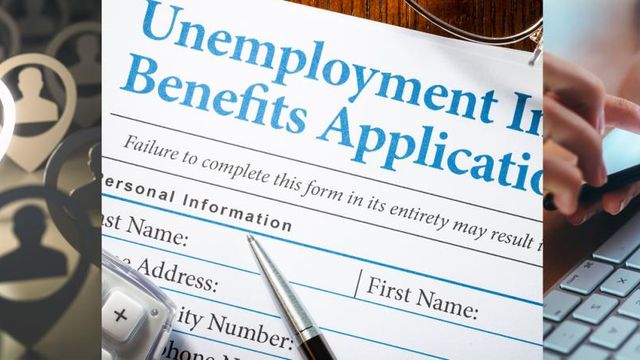Out-of-work North Carolinians had a 90-day deadline. The state said it ran out in 30.
Another glitch at the Cooper administration's unemployment office leaves those seeking benefits frustrated and confused.
Posted — UpdatedNorth Carolina’s Division of Employment Security told people in late February that they needed to file new documents within 90 days to prove, and in many cases to prove for a second time, their past employment. This was to keep in line with changes Congress made in December to a federal program for people out of work due to the coronavirus pandemic.
Then, 30 days later, the state told these same people they missed that 90-day deadline, even though barely more than a month had passed.
The letter was a mistake, but the people who got it still may not qualify for benefits, according to DES spokeswoman Kerry McComber. It wasn’t that the 90 days was up, it was that they didn’t provide enough documentation to meet the federal requirement for a program called Pandemic Unemployment Assistance, she said.
“We have new notice language to describe that issue, and staff are actively reaching out to claimants who met the deadline, but did not provide sufficient documentation, to allow them another opportunity to meet the requirements before we deny them benefits,” McComber said in an email this week.
What that means may ultimately vary from person to person.
People WRAL News spoke to, who are trying to meet the requirements, described shifting explanations from the DES call center and, in some cases, hours on the telephone. Several said they uploaded what the state asked for within days of the initial request.
“It’s absurd,” Chris Telesca, a freelance photographer in Raleigh, said before WRAL got an explanation from DES. “There’s literally nothing they can show me that gives me an intelligent explanation of what happened.”
Telesca went back and forth with DES for weeks and provided WRAL with call records and screenshots to prove it.
“They told me that they gave me 90 days, but that under the new U.S. Department of Labor guidelines, once you turn the paperwork in, if it’s not the right paperwork – and they’re not very clear about what is the right paperwork – they’ll only give you 48 hours to give the right stuff.”
One DES employee told Telesca what he’d sent was fine, he said. Another said it wasn’t. It turned out they wanted a 1099 tax form from a 2019 photography job, he said. As of this week, Telesca’s benefits apparently will be paid.
“This crap’s been going on since February, and just because she says it’s OK today doesn’t mean it’s going to be OK tomorrow,” he said.
Others told a similar story.
“We’ve been told so many different things by so many different representatives,” said Shelly Watts, who had the same problem and is part of a Facebook group for unemployed people struggling with an often complicated system.
McComber said DES mailed the faulty notices to 288 people. WRAL spoke to six of them for this story.
To date, North Carolina’s system has paid out $11 billion from seven programs, most of it federal money. About 2 percent of claimants have cases that are as yet unresolved, according to DES.
Thirty-two percent of people who filed – more than 477,000 people – didn’t qualify for benefits because they didn’t meet various eligibility requirements.
It can be a long road to get that answer because of backed-up appeals process, and some of the people who got a 90-day letter face that prospect now. Appeals take months just to schedule a hearing, which must be heard by an attorney.
As of last month, the state had 90 attorneys hearing appeals and about 30,000 waiting to be heard. This month, the situation has gotten worse, according to the latest figures from DES: 31,564 pending appeals and 76 attorneys on the job, with DES in the process of hiring 11 more.
Asked this week about issues at DES, Gov. Roy Cooper said everyone there is working hard and taking every case seriously.
“The appeals process is tougher because lawyers are required to hear those appeals,” Cooper said. “That’s an issue that they are still working on and need to get better at.”
Claimants WRAL spoke to are exasperated.
“It’s a pretty big headache,” Watts said, “especially when we do what we’re supposed to do on our end.”
Telesca said his “guts are constantly churning when dealing with this stuff.”
“I have no confidence that I’m ever going to totally understand what’s going on,” he said.
Related Topics
• Credits
Copyright 2024 by Capitol Broadcasting Company. All rights reserved. This material may not be published, broadcast, rewritten or redistributed.






